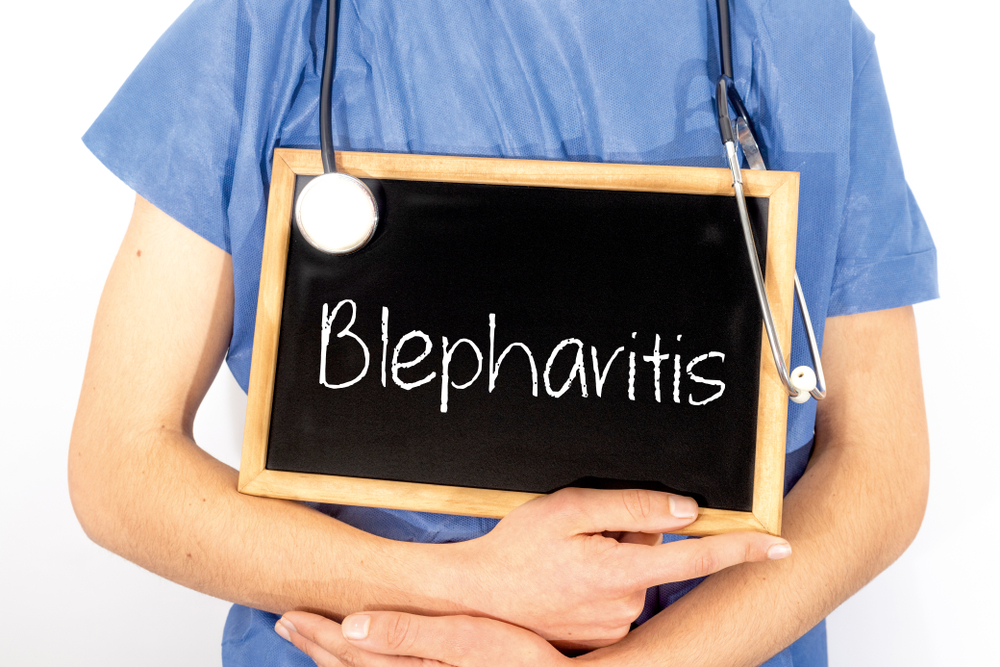What is blepharitis?


by Nazmeen Ahmed BSc Hons, Director and Optometrist, AJ Spurrett Opticians (part of the Valli Group of Opticians)
What is Blepharitis I hear you ask?
Blepharitis is an inflammation of your eyelid margins. It is a chronic (long-term/persistent) condition. This means that once you’ve had it, it can come back even after it has cleared up – such a nuisance right? It normally affects both eyes and can usually treat it by keeping your eyelids clean, but you may need to do this for several months.
Normal physiology
Both the upper and lower lids have glands which secrete special substances that help the tears to spread across the eye. When these glands’ function is impaired, the special substances do not reach the tear film on the front of the eye which cause it to break up and dry patches to develop, which in turn causes irritation
Why do I get Blepharitis?
OK, so before you read any more it is important to note that blepharitis can be extremely uncomfortable, but rarely causes serious eye damage. It is vital that you visit your Optometrist regularly to help you manage the problem
There are two types of blepharitis;
Anterior blepharitis: This affects the outside front edge of your eyelids (near or among your eyelashes). It is usually caused by staphylococcus bacteria. This bacteria is a normal skin commensal – meaning it lives on our skin without causing any harm. In some people though it can cause localised infection of the eyelids resulting in inflammation and blepharitis.
Posterior blepharitis: This is also called Meibomian Gland Dysfunction (MGD). MGD is caused when the inside rim of the eyelids are affected. This is where the glands are situated which produce part of your tears, in particular the meibomian glands. People with MGD are thought to have a problem with these glands and the fluid they produce. Often these patients have dry eyes and symptoms relating to dry eyes.
You may also get blepharitis as a complication of seborrhoeic dermatitis, which makes your skin inflamed or flaky. This can involve the scalp (when it is called dandruff), lashes, ears and eyebrows. Seborrhoeic dermatitis can cause both anterior blepharitis and MGD.
In real life most people suffer a combination of the different types of blepharitis so all the causes can contribute to the symptoms.

How will I know I have blepharitis?
It can make your eyelids red, your eyelashes crusty and your eyes to feel irritated or itchy. It can also lead to burning, soreness or stinging in your eyes (ouch!!).
You may find your eyelids become puffy and/or greasy.
The symptoms tend to be worse in the morning and when you wake up you may find your lids are stuck together. Tiny dandruff-like material appears along the eyelid margins. In severe cases, your lashes may fall out, and you can develop small ulcers or styes aswell.
Other conditions which are usually associated with blepharitis are: dry eye syndrome, seborrhoeic dermatitis and rosacea.
Your optometrist can spot the signs of blepharitis by looking closely at your eyelids with specialised equipment (a slit-lamp).
Who is at risk of blepharitis?
Blepharitis is more common in people aged over 50, but it can develop at any age. As you get older, the glands in your eyelids that secrete the special substances can become blocked more easily. Your tears then contain fewer lubricants and your eyes can feel gritty and dry, so seborrhoeic blepharitis and MGD tend to happen more in older people – like there isn’t enough to deal for the over 50s as it is!
What are the possible complications of blepharitis?
- Chalazion (meibomian cyst): This is caused by a blocked meibomian gland. Sometimes it can become infected and painful.
- Stye: This is an infection of the lash root follicle
- Changes to the eyelashes which include:
- Loss of the eyelashes (madarosis)
- Misdirection of eyelashes (trichiasis)
- De-pigmentation of the eyelashes (poliosis)
- Eyelid ulceration and scarring
- Ocular surface inflammation leading to conjunctivitis and ulceration of the cornea (marginal keratitis).
How do I treat blepharitis?
If you have blepharitis, avoid eye make-up and smoky atmospheres. It is possible to make your eyes more comfortable, but blepharitis often cannot be totally cured unfortunately.
This condition is persistent and the inflammation tends to recur if you do not keep up with regular treatment. There are treatments which can help you reduce the effects of blepharitis. The main aims of the treatment are:
- To unblock the meibomian gland openings which may be infected and inflamed.
- To replace tears if the eyes are dry
The main 3- Step regular dailytreatment routine to remember is
1 – Heat
2 – Clean
3 – Hydrate
1 – Heat/Warm Compress: Warm compresses work by warming the material that blocks the glands and loosening the crusts on the eyelids. This makes them easier to remove. You can use a flannel or you can buy reusable warming packs from your optometrist which you heat up in the microwave. Soak the flannel in hot, but not boiling, water and place it on the edge of your closed lids for five minutes, rocking it gently. This will help soften the secretions, loosen the crusts and allow the oily secretions made by the glands to flow freely. Use a separate clean compress for each eye (speak to your optometrist about other types of warm compress that are available.
Massaging the eyelids immediately after applying the warm compress for 5-10 minutes helps push any secretions from the meibomian gland through their openings. Massage should be done neither too gently nor too firmly and of course with your eyes shut.
You can now move onto Step 2 below to clean your lids
2 – Lid cleaning: You can buy special lid wipes or eyelid solutions. Your optometrist will be able to advise you on this as there are many products available. Alternatively, you can fill a clean egg cup with boiling water and leave to cool. Then add ¼ teaspoon of bicarbonate of soda (not baking powder).
Use a lid cleaning wipe or a cotton wool pad dampened in the special solution or the one you have made (squeeze it out first) to gently clean the edges of your eyelids near your lashes. Wipe from the inner corner, near your nose, to the outside corner of your eye. It is important to clean off any crusts at the base of your eyelashes. Be careful not to clean inside your eyelid or to touch the surface of your eye with the wipe or cotton wool pad.
Repeat this twice a day at first and reduce to once daily as the condition improves.
Now the last step:
3 – Hydrating with Lubricants: Using ocular lubricants (eye-drops) after cleaning your eyes can help them to feel more comfortable. They help in replacing the poor-quality tears and also in spreading the existing tears over the ocular surface.
Eye drops, eye gels and eye ointments all vary in viscosity (how watery or sticky they are). The more viscous lubricants stay on the ocular surface for a longer duration. There ae many types of ocular lubricants available. Ask your optometrist to recommend the best type to suit your eye problem. Ocular lubricants rarely cause any problems as most are now preservative free so are safe to use as often as you need/can.
Antibiotic treatment: Occasionally people who suffer from severe blepharitis may be prescribed antibiotic eye ointment or tablets to take by mouth. The treatment is to control the flare ups and the oral antibiotic course usually takes several weeks or months. The benefits may last some months after you finish the treatment but symptoms can recur.
I would strongly advise that lid hygiene be practised as part of your daily routine to prevent and control flare ups. Go on, give yourself a daily 15 minute pamper of Heat Clean and Hydrate – you totally deserve it.